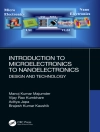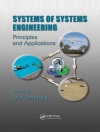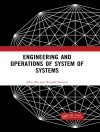- Comprehensive review of key topics in root science, including root architecture, root growth regulators, root anatomy and nutrient acquisition
- Coverage of root response to both biotic and abiotic variables
- Discusses the range of techniques to optimize root function, from phenotyping to identify desirable root traits and exploiting the genetics of root traits to the use of plant growth-promoting rhizobacteria (PGPR) and arbuscular mycorrhizal fungi (AM)
Mục lục
Part 1 Analysing root system architecture, growth and interactions with the rhizosphere
1.Advances in root architectural modeling: Johannes A. Postma, Forschungszentrum Jülich, Germany; and Christopher K. Black, The Pennsylania State University, USA;
2.The development of crop root architecture and optimization of nutrition acquisition: the case of rice: Wei Xuan, Nanjing Agricultural University, China; Yuanming Xie, Nanjing Agricultural University, China and Ghent University and VIB-UGent Center for Plant Systems Biology, Belgium; and Tom Beeckman, Ghent University and VIB-UGent Center for Plant Systems Biology, Belgium;
3.Advances in understanding plant root growth regulators: Findimila Dio Ishaya and Amanda Rasmussen, University of Nottingham, UK;
4.Advances in understanding plant root anatomy and nutrient acquisition: Dimitris L. Bouranis and Styliani N. Chorianopoulou, Agricultural University of Athens, Greece;
5.Advances in understanding plant root hairs in relation to nutrient acquisition and crop root function: Timothy S. George and Lawrie K. Brown, The James Hutton Institute, UK; and A. Glyn Bengough, University of Dundee, UK;
6.Understanding plant-root interactions with rhizobacteria to improve biological nitrogen fixation in crops: Ulrike Mathesius, Australian National University, Australia; Jian Jin, La Trobe University, Australia and Chinese Academy of Sciences, China; Yansheng Li, Chinese Academy of Sciences, China; and Michelle Watt, Forschungszentrum Juelich Gmb H, Germany and University of Melbourne, Australia;
7.Advances in understanding arbuscular mycorrhizal fungal effects on soil nutrient cycling: Haiyang Zhang and Jeff R. Powell, Western Sydney University, Australia;
Part 2 Root response to biotic threats
8.Advances in understanding plant root response to weedy root parasites: M. Fernández-Aparicio and D. Rubiales, CSIC, Spain;
9.Advances in understanding plant root responses to root-feeding insects: Scott N. Johnson, Hawkesbury Institute for the Environment – Western Sydney University, Australia; and Ximena Cibils-Stewart, Hawkesbury Institute for the Environment – Western Sydney University, Australia and Instituto Nacional de Investigación Agropecuaria (INIA), Uruguay;
10.Advances in understanding plant root response to nematode attack: Shahid Siddique, University of California-Davis, USA; and John T. Jones, The James Hutton Institute and University of St Andrews, UK;
Part 3 Root uptake of nutrients and water
11.Advances in the understanding of nitrogen (N) uptake by plant roots: Malcolm J. Hawkesford and William R. Whalley, Rothamsted Research, UK;
12.Advances in understanding plant root uptake of phosphorus: Jiayin Pang, The University of Western Australia, Australia; Zhihui Wen, The University of Western Australia, Australia and China Agricultural University, China; Daniel Kidd and Megan H. Ryan, The University of Western Australia, Australia; Rui-Peng Yu, Long Li and Wen-Feng Cong, China Agricultural University, China; Kadambot H. M. Siddique, The University of Western Australia, Australia; and Hans Lambers, The University of Western Australia, Australia and China Agricultural University, China;
13.Advances in understanding plant root water uptake: Mutez Ali Ahmed, University of Bayreuth, Germany; Doris Vetterlein, Helmholtz Centre for Environmental Research-UFZ, Germany; and Andrea Carminati, University of Bayreuth, Germany;
Part 4 Improving root function
14.Understanding and exploiting the genetics of plant root traits: Roberto Tuberosa, Elisabetta Frascaroli, Marco Maccaferri and Silvio Salvi, University of Bologna, Italy;
15.The use of plant growth-promoting rhizobacteria (PGPR) to improve root function and crop nutrient use efficiency: Melissa M. Larrabee and Louise M. Nelson, University of British Columbia, Canada;
16.The use of arbuscular mycorrhizal fungi to improve root function and nutrient-use efficiency: Tom Thirkell, Grace Hoysted, Ashleigh Elliott and Katie Field, University of Leeds, UK; and Tim Daniell, University of Sheffield, UK;
17.Using systems agronomy to exploit deep roots in crops: John Kirkegaard and Julianne Lilley, CSIRO Agriculture and Food, Australia;
18.Rootstocks to improve root function and resource-use efficiency: Francisco Pérez-Alfocea, CEBAS-CSIC, Spain; Stephen Yeboah, CSIR-Crops Research Institute, Ghana; and Ian C. Dodd, Lancaster Environment Centre, UK;
19.Delivering improved phosphorus acquisition by root systems in pasture and arable crops: Richard J. Simpson and Rebecca E. Haling, CSIRO Agriculture and Food, Australia; and Phillip Graham, Graham Advisory, Australia;
Giới thiệu về tác giả
Dr Roberto Tuberosa is Professor of Plant Biotechnology and Breeding in the Department of Agriculture and Food Science at the University of Bologna, Italy. Professor Tuberosa is internationally renowned for his genomic studies to dissect the genetic basis of drought resistance in cereals and how to leverage this knowledge toward the release of climate-resilient cultivars. He is on the editorial board of several leading journals, has been involved in many European and international research projects in cereal breeding, represents Europe in the International Crop Science Society (ICSS) and has published over 170 articles as well as edited a number of books. He has organised international congresses on genomics and breeding of cereals under drought conditions and is a member of the scientific board of the Wheat Initiative and of the Plant Stress advisory board. Amongst other honours, Professor Tuberosa has been elected a Fellow of the Crop Society of America.












